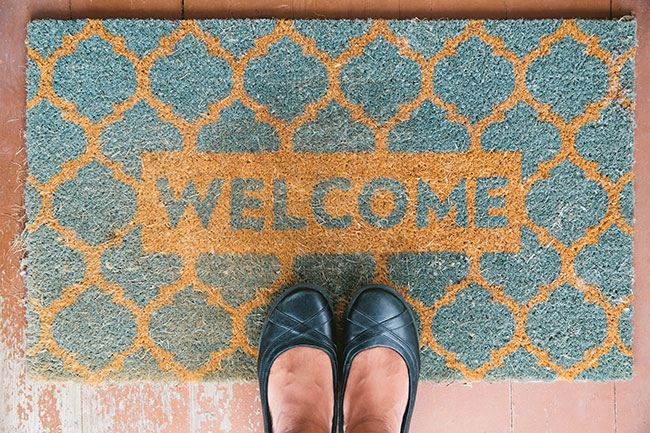
Key points for creating an at-home clinic
By Dirk Keenan
Features Business ManagementWhy working at home could be for you
 Photo: Getty Images
Photo: Getty ImagesWorking from a home office is a welcome break from stressful daily commuting and bad weather issues, and can help busy chiropractors achieve a better work-life balance.
Home offices allow you to see patients on an emergency basis, often interrupting your day in less than 15 minutes. You can also save a great deal of money by enjoying the tax advantages of having shared space with your office.
My wife and I did not start out with a home practice. We first enjoyed living in a spacious condominium three kilometres away from our practices in Ottawa’s Little Italy.
One day we asked ourselves: “In the event we can’t practice, what could we do to stay afloat financially?” And, “could we save the roughly $30,000 a year in living expenses associated with our condominium?”
As a couple we don’t value owning a lot of things, but we do relish having a lot of experiences – particularly those experiences associated with travelling abroad.
At the time we asked ourselves these questions, we had just renovated the basement of the clinic. My wife Jan agreed to move her naturopathic practice downstairs, which relocated space within the clinic. In turn, we had enough space to create a 750 square foot apartment on the second floor. (All of the space we needed since my daughter had moved out years before.)
Currently, my wife and I live in that apartment in the clinic, which has a shared entrance. Laundry is downstairs, and while we don’t have enough space to entertain, we do manage to have my daughter and her husband stay with us for a weekend every now and then. We converted the second upstairs bedroom into a kitchen/living room combination. It’s not huge, but it’s sufficient. There is a three-piece bath on the second floor and a nice large bedroom across the hall. We installed a door on the landing to create separation from the clinic.
One door and 15 steps is my commute. I share the ground floor and the open concept treatment room (which handles up to nine people) with the physiotherapist. Both the physio and I have private offices – mine is equipped with an X-ray.
People calling day and night is not a problem. First of all, we don’t have a doorbell and secondly, most people call before they come in anyway. When the office is closed, it’s closed.
Learning to use all available space really helped to reduce costs. By making use of the basement for naturopathic medicine, and massage therapy and holistic nutrition, the second floor apartment was made and we were able to sell our condominium. We live rent-free and the costs associated with home ownership are paid as a practice expense. We have also found a way for our health team to share in the costs of running the practice, further reducing the expenses.
Our building is classified as a two-bedroom house, but has 3,000 square feet of useable space, which has been updated over the years to be more professional and personable.
With the two of us living in the office, we have now freed up a great deal of expenses from our condo, which was costing $30,000 annually (not including the second car). Now with personal expenses reduced, it’s possible to consider an alternate lifestyle that involves a balance between work and travel.
Before you leap…
Of course, there are some folks that might not do well in this situation. Couples with very active children or teenagers might find this situation challenging due to noise concerns. Couples that require some separation and value their independence might also struggle in this situation. Big families need a lot of space and should be allowed to run around and make noise. That isn’t ideal in a house practice, unless you have a big building with room to really separate the spaces.
You may also lose your capital gains exemption for your primary residence, so you should also talk to your accountant about doing this before you make a change.
However, the bottom line still stands: Home practices can be worthwhile to provide you with more time, a better work-life balance, and more efficient use of your cash.
Key points for creating an at-home clinic
- If you’re not able to create a separate entrance, ensure there’s a door to your living space that no one ever enters
- Try to have your space on a separate floor from your clinic
- Bring in a competent designer to help you see the possibilities of converting floor plans
- Be prepared to de-clutter and get rid of a lot of stuff
- Consider renting storage during the transition
- Make sure you have adequate ventilation for when you are cooking to avoid smells in the office
- Allow six months to a year for planning and any renovations
Dirk Keenan is a second-generation chiropractor practicing in Ottawa’s oldest clinic for the past 34 years. Dr. Keenan pursues an active interest in multi-disciplinary clinics, interprofessional education, and chiropractic practices abroad. He is currently in the midst of establishing an international locum service. Interested parties in international locums, multi-disciplinary practices, or interprofessional education can contact him at dirk@thespinedoctor.com.
Print this page